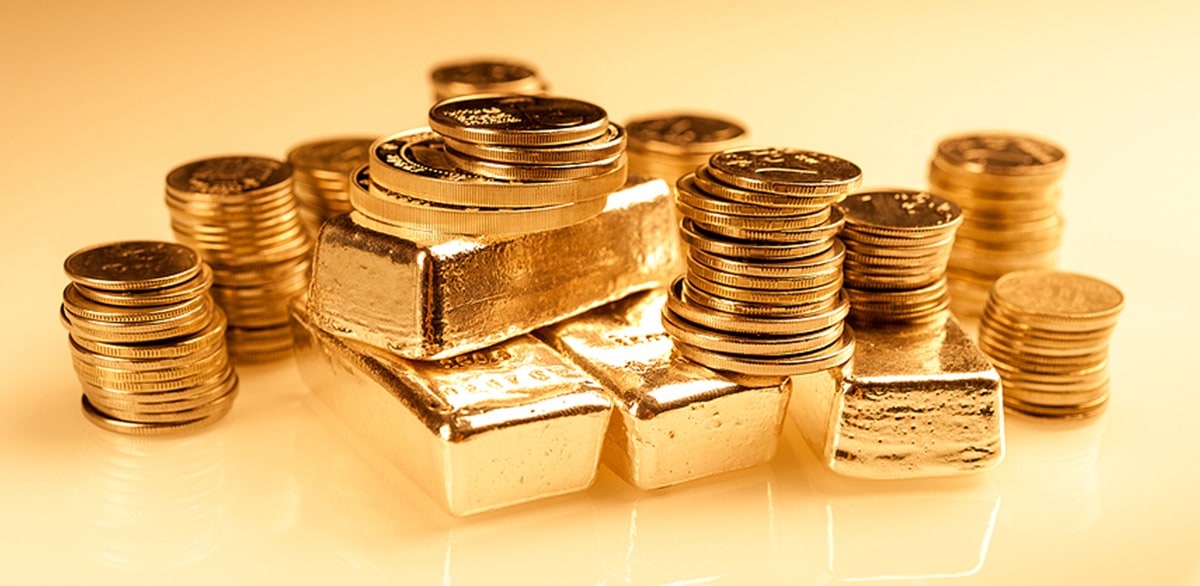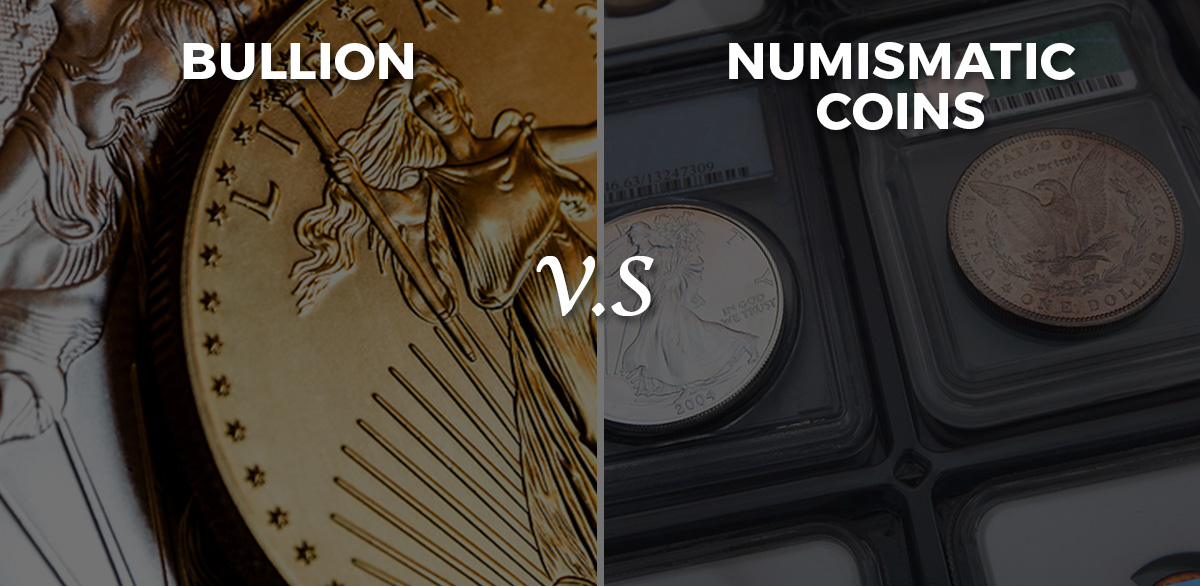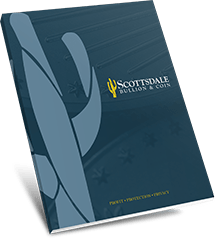
If you’re new to the world of precious metals investing, then you might be wondering, “What is bullion?” And what’s the difference between bullion and rare coins?
Your first step might be to look the term up, which could further confuse the issue. Because definitions of bullion from various dictionaries vary quite a bit.
For instance, the Cambridge and Webster dictionaries basically define bullion as only silver or gold with a purity of at least 99.5% and in the form of ingots or bars.[1][2] It might seem trivial to split hairs with dictionary definitions. However, for many investors, small quibbles can make a huge difference.
Find out why precious metals investors and dealers understand the definition of bullion differently in various contexts in this article.
What Does Bullion Mean? A Definition for Precious Metals Investors
What’s wrong with only defining bullion as silver or gold bars and ingots? Bullion does refer to high-purity metal. This very pure metal might come in the form of gold or silver bars or ingots.
Still, that definition leaves out some of the most important factors to know about bullion. Especially for investors.
Other Precious Metals
Bullion can refer to other rare metals besides silver and gold, such as palladium or platinum. Sometimes, you might even find pure base metals referred to as bullion. Keep that in mind because you might be offered a bullion coin, token, or bar that’s not necessarily valuable. For example, a copper coin may look shiny, but as they say, all that glitters is not gold.
Bullion Coins
While you might find gold or silver bullion bars and ingots, you can also find plenty of bullion coins. Investors value bullion coins because of the purity of their precious metal content. With that in mind, it’s important to understand the distinction between bullion coins vs. numismatic coins.
Bullion Coins Vs. Numismatic Coins

When some people think of precious metals coins, they might picture the kind of old, rare coins that people collect because of their numismatic value. “Numismatic” refers to coins that have a market value greater than the value of the metal used to mint them. Factors that can impact numismatic value include demand, scarcity, and condition. Some people invest in both numismatic and bullion coins. At the same time, it’s important to understand the difference.
For instance, the value of a 1927 D Gold Double Eagle coin in mint condition can be over $1 million. Even one of these coins in poor condition may bring over $250,000 at auction.[3] At 90% purity, this coin contains .9675 of a troy ounce of gold. In the year the United States Mint produced the coin, it would have been worth its face value of $20. Even with today’s historically high gold prices, recently hitting more than $2,000 an ounce, the numismatic value of this particular coin far exceeds its worth in gold.
To better understand the difference between numismatic and bullion values, here are some other examples:

Everything you need to know to get started in Precious Metals
Learn how precious metals can strengthen your portfolio, protect your assets and leverage inflation.
Request the Free GuideEven some rare copper pennies have a high numismatic value, but the metal inside might be worth barely more than the face value of one cent.[4]
On the other hand, some people collect older silver coins (also commonly referred to as junk silver) that aren’t in very good condition mostly for the bullion value of the silver. For example, a worn example of a Mercury dime might be worth a little over a dollar just because it is 90% silver.[5]
Read more about: Bullion vs. Numismatic Coins
IRS Bullion Definition

Investors interested in starting a precious metals IRA should understand how the IRS defines bullion coins and bars, in accordance with Section 5112 of Title 31 of the United States Code.[6]
For a gold IRA, the bullion coins have to be 99.5% pure, which would align with the typical dictionary definition. In contrast, the IRS only allows silver of 99.99% purity to be included in a self-directed IRA. Palladium and platinum must have 99.95% purity.
So, the definition of IRA-eligible bullion might even vary by the precious metal in some circumstances.
Why Are Investors Interested in Bullion Coins?
The World Gold Council reports investors choose coins and bars more than any other form. Over the past several years, the demand for these investment products has continued to grow at a steady pace. There are some important reasons for this:
Trust
Governments around the world produce bullion coins. If the United States, Canada, or another reputable national mint issues coins with the amount and purity of the metals stamped right on them, investors can trust that this information is correct. This is important because the difference of an ounce of gold could mean overpaying by thousands. The same is still relatively true for bars or rounds that come from well-known mints.
IRS Rules
As mentioned above, investors who want to open a precious metals IRA can only buy certain kinds of bullion coins and bars that meet IRS specifications. The IRS won’t accept numismatic coins, and they won’t accept anything that doesn’t meet their purity standards.
How to Invest in Gold & Silver Bullion
Information is key when investing in gold & silver bullion, or any other form of bullion: gold, silver, platinum, or palladium.
While you’re welcome to research the topic more on your own, a reputable gold or silver dealer can provide a wealth of knowledge.
The precious metals advisors at Scottsdale Bullion & Coin are here to help you. Call 1-888-812-9892 to speak with a bullion expert today. Our free precious metals investing guide can also be a great resource for you.
